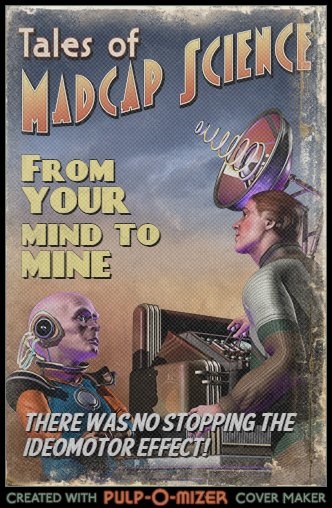

What's New

Words of Wisdom
52
cards and 15 activities to spark conversations and make sense of learning.
Learn more HERE.
What We Do
The Firefly Group helps people make sense of what they learn and experience.
Whether facilitating a group for better decision-making, keynoting a conference, leading a training, or writing an instructional design, we use novel methods that engage, spark creativity, and produce memorable results.
 If
this sounds like a good direction for your organization, let's talk about
how we might collaborate! Please give me a call (802.257.7247) or send an
. - Brian
If
this sounds like a good direction for your organization, let's talk about
how we might collaborate! Please give me a call (802.257.7247) or send an
. - Brian
 Your ETR (Estimated Time to Read): 10 minutes Your ETII (Estimated Time to Implement Ideas): 5 weeks |
What
can you teach with a glass of water and an index card?
Watch my video and find out!
January
2017
|
Say
It Quick |
Discoveries bits of serendipity to inspire and motivate |
Ideas fuel for your own continuous learning |
Activities tips and tricks you can try today |
|
On the Move - Mount your ideas on wheels |
The Ideomotor Phenomenon - Action that's unconscious |
Ideas Speak Loudest - Concepts that result in activity |
Chevreul's Pendulum - Demonstrate the power of an idea |
Ideomotor Effect: From Ideas to Action
Usually we assume we are in full control of our actions and we put great stock in our ability to choose what we do. But just as we can have a reflexive reaction to a physical stimulus, we can also have a reflexive reaction to a simple suggestion. Find out how the ideomotor phenomenon can influence your behavior beginning with this story of exactly 99 words.
On the Move
At a small church in rural Vermont, everything is attached to wheels. The cabinets, bookcases, tables, chairs, and room dividers that constitute the Sunday classrooms are all on rollers. When it's time for the strawberry supper or Christmas bazaar, everything but the kitchen sink is wheeled away leaving one large space for these special events. A few years ago, the whole building was lifted off its foundation and rolled 700 feet to accommodate a road expansion project.Whatever your belief system, make it strong but not static. Mount it on wheels ready to roll into action.
 The
Ideomotor Phenomenon
The
Ideomotor Phenomenon
Action that's Unconscious
Is it possible to find water by holding a dowsing stick above the ground? Can you receive messages from the life beyond by playing with a Ouija board? Though the answer to both these questions is "No," there is a solid scientific explanation for why someone might think both questions can be answered "Yes." The scientific explanation lies in the ideomotor phenomenon.
Most of us act as if we are in full control of our body at all times. Unless we suffer from an illness or a state of altered awareness, we probably would agree that our movements are consciously controlled. Yet they aren't always.
There are, in fact, three types of unconscious behaviors: a.) excitomotor actions such as breathing and swallowing, b.) sensorimotor or reflex actions resulting from a physical stimulus and c.) ideomotor or actions resulting from a suggestion or expectation.
Just as your body can react reflexively to pain, it can also react reflexively to an idea, suggestion, or thought without a conscious decision on your part to take action.
Beginning in the 1800's, scientists in fields such as physics (Michael Faraday), medicine (James Braid), chemistry (Michael Eugene Chevreul), and psychology (William James) studied phenomena like dowsing, Ouija boards, and table lifting by spirit mediums. They found that these effects can be explained by a disconnection between our conscious mind and our physical movements.
William B. Carpenter (1852), who coined the term "ideomotor action," demonstrated that muscular movements can be initiated by the mind involuntarily simply by the suggestions of others. Carpenter explained that in movement, there is both the mental activity that produces a movement and there is the mental activity that registers that movement consciously. When we experience the ideomotor phenomenon, the conscious registration of making the movement doesn't happen. As a result, we attribute the action to some other force (psychic ability, spirits, mysterious energies, etc.).
What's interesting is that we really do feel the movement of a dowsing stick or the gliding of our hands across the Ouija board. The psychologist Ray Hyman has shown that "honest, intelligent people can unconsciously engage in muscular activity that is consistent with their expectations". (Hyman 1977)
The ideomotor effect has been well documented and consists of several distinct psychological steps which can be simplified as…
The ideomotor phenomenon is a reminder of how much trust we place in our personal volition and our sensory experience. And it highlights our inability to comprehend how that experience might be influenced by the unnoticed corners of our own mind.
Ideas Speak
Loudest
Concepts
that Result in Activity
It should be no surprise that ideas can create movement. Before we move, we think, however fleetingly, about what we want to do.
Besides this, any thought worth having will compel the thinker to do something differently. Certainly there are many instances when the action doesn't actually accompany the thought. Many ideas whether for a new product or to put a pizza in the oven die before someone takes action.
But it's interesting that there is an unconscious connection between thought and movement. The ideomotor phenomenon suggests that even when we barely conceive of something, our body starts acting. On some level, given an idea we can't help ourselves. We start moving.
The 99-Word Story suggests a similar necessary connection between or beliefs and our actions. Everything about this little church community had become a metaphor describing this connection between ideas and action. The ideomotor phenomenon is also a metaphor for learning: new thoughts result in new ways of doing. And it works for leadership too: a remarkable vision doesn't just inspire, it propels people to act and fulfill that vision.
We often say that actions speak louder than words; that what you do is more important than what you say. Perhaps we should also say ideas speak louder than actions; that what you think is more important than what you do.
Chevreul's
Pendulum
Demonstrate the power of an idea
You don't have to be delusional, psychic, or gullible to experience the ideomotor effect. With this very simple activity, you can demonstrate the power of an idea to inspire action. It is named after Michael Eugene Chevreul who used this pendulum to explain how an unconscious movement can be made apparent by amplification. A version of this activity can also be found in The Fifth Discipline Fieldbook by Peter Senge (Senge, Peter M. The Fifth Discipline Fieldbook: Strategies and Tools for Building a Learning Organization. New York: Currency, Doubleday, 1994.)
Purpose: To demonstrate the power of an idea to influence action
Materials: A heavy metal washer or bolt tied to a 12 inch string, paper, and a pen for each person
Participants: Any number sitting at tables
Time: 15 minutes
Procedure:
Explain that we don't always realize the impact an idea can have on our actions. Sometimes just the suggestion of a concept is enough to start a bit of motion in a new direction. Suggest that this activity is a chance to demonstrate the power of an idea over our actions.
Distribute a washer, string, paper and pen to each person. Ask them to draw the four points of a compass, North, South, East, and West, on their paper. Then have each person hold their string in hand with the washer hanging over the center of their compass and their elbow resting on the table.
Instruct them to hold their hand totally motionless so the washer is suspended absolutely still about an inch above the center of their compass. Then tell them that they are to imagine that the pendulum they have created is swinging ever so gently North to South. Caution them to keep their hand and body as still as possible but to think "North-South." After a few moments, several people will report movement of their pendulum in the correct direction.
Some people will not experience the effect. In those cases, encourage people to be patient and keep trying. Not everyone will be successful and that's alright.
For those who have been successful with the effect, challenge them to see if they can induce their pendulum to change direction and swing East to West.
After a few moments of experimentation, gather everyone for a brief discussion.
Discussion:
- How did you react when you were able to make your pendulum move?
- What did you do to ensure your hand remained as still as possible?
- How can you explain the movement of the pendulum? (The length of the string amplifies tiny movements of the hand, arm, and fingers that are initiated by ones thoughts.)
- If you were not able to control the pendulum, why might that be?
Choose information elsewhere in the Firefly News Flash to explain the basics of the ideomotor phenomenon. Then ask a few more questions from among these suggestions:
Discussion:
- Describe a time you experienced someone's ideas to be especially inspiring.
- Describe a time another person's words left you completely deflated.
- What are some examples of when ideas have power over our actions?
- What are some of the positive and negative implications of this particular power that ideas have?
- If a thought can initiate an action, what are the implications for leaders who want to articulate a vision, or describe an organization's mission?
- If thoughts can lead to actions, what would be the effect of repeating the same thought - either positive or negative - over and over in your mind?
If you try this activity, please about what happened. Your ideas will surely lead to new actions for me and other readers!
|
Whether you need a keynote speaker, or help with strategic planning, performance improvement, or training facilitators and trainers in your organization, I look forward to your call (802.380.4360) or . -- Brian |
Read previous
issues. Click Library!
To add or delete your name to our mailing list, email
with a short note in the subject line.
I want this newsletter to be practical, succinct, and thoughtful. If you have suggestions about how I can meet these criteria, please let me know! Send me an with your thoughts and ideas.
Home
| Services | Products
| Mission | Ideas
| The Group | The
Buzz
(c)
2016 The Firefly Group